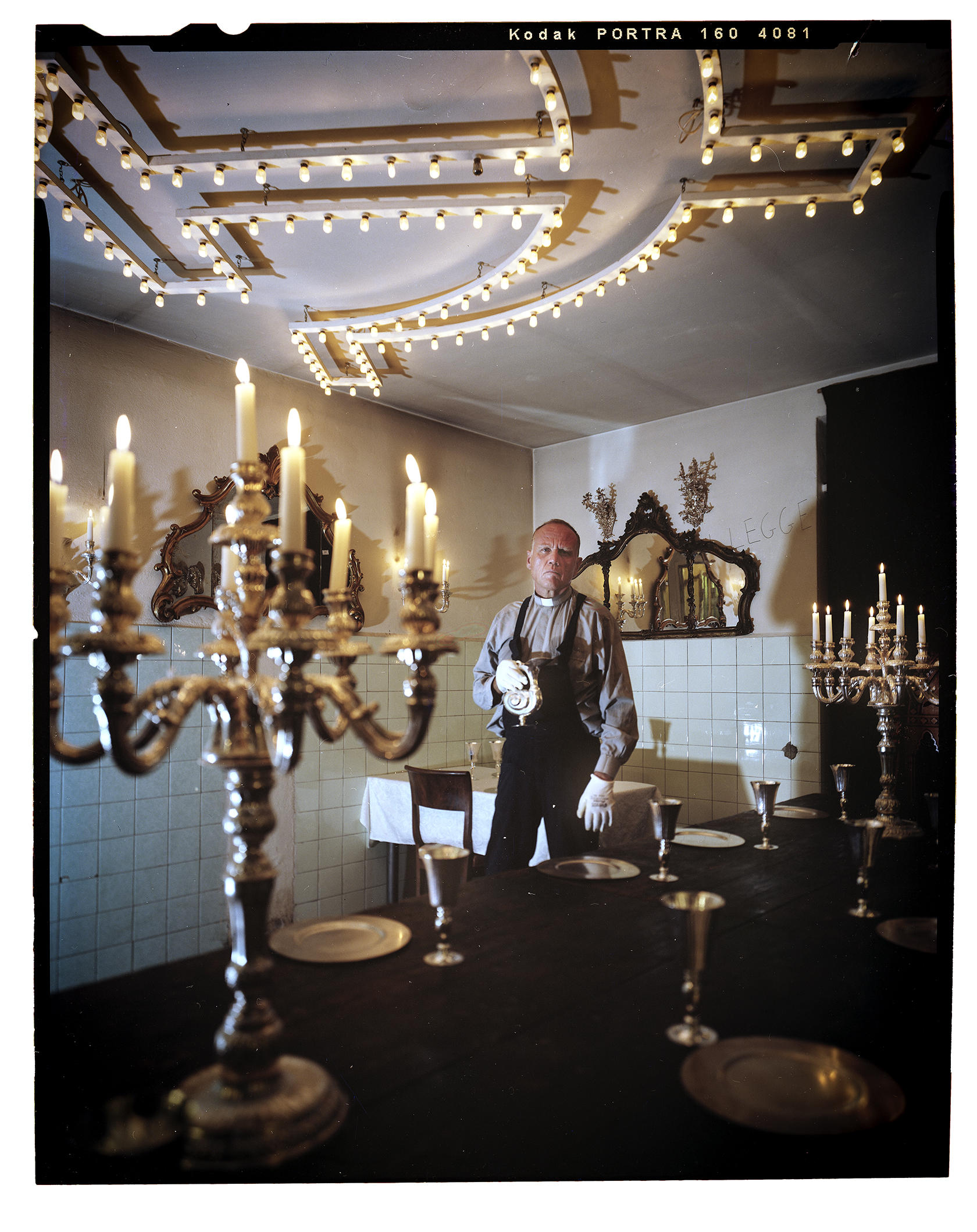These are photographs of Florentine artisans. Not the typical inner-city artisans that are sought by tourists, driven by the Siren Song of the Instagram feed. Those artisans work in shops in small side streets that tourists safari into, hoping to catch a glimpse of “real” artisans working at their craft. Those interactions change the relationship between artisan and art, and between craft and consumer.
The artisans in these images aren’t working in the city center. They are found somewhere just outside the center. In this sense they are pure, untouched by the desire that someone will walk in and discover them. This is no back-lot film set designed to create the illusion of authenticity. Pampaloni and the workers are authentic. They are the real deal. They work in precious metal, create works of subtle beauty from a process that is anything but delicate. Fire, machining, ancient, roughly-hewn techniques bring about objects of refined and polished loveliness. The portraits are of the men who combine both labor and aesthetic, every day.
From pre-production to the final product of silver objects, silverware, goblets, candelabras, to awards/trophies made for the Oscars, there is always a touch, or better, a sense of whimsey or jest in their work. Even in the operation of their restaurant (yes, they also run a fine-dining restaurant at the same location), there is that game-play of Pampaloni art.
My approach to making these images was to be as formal as possible reverting back to images made by August Sandler in his portfolio, People of the 20th Century, but without claiming to represent “photographic neutrality,” which, as Susan Sontag rightly indicated, is pseudoscientific at best. Instead, I wanted to ensure that the point of view of the subject was communicated as clearly as possible, through Sandler’s idea of “exact photography” without retouching or any other manipulations of the images so that the viewer could ‘read’ the portraits as easily as possible. In so doing, I decided to make these images using positive film and a large format camera. The process took me personally back to when an image was made at the moment the shutter was released. E6 film doesn’t allow for any mistakes in exposure, and the large format camera does not allow an image to be made using methods of last-minute improvisation. There is no post-processing. Everything is done with intent as the shutter is pressed.
David Andrè Weiss
[:it]Sono sempre stato attratto da quello che accade dietro le quinte, da dove provengono gli oggetti, e la “parte nascosta”. La macchina fotografica è per me uno strumento per esplorare le mie curiosità, I miei miti, i desideri da bambino. Può essere un processo visivo complicato o qualcosa di apparentemente semplice, come fare ritratti.Queste sono delle foto di Artigiani Fiorentini. Non I tipici artigiani del centro che sono cercati dai turisti, guidati dal suono delle Sirene alimentato da Instagram. Quegli artigiani lavorano in negozi in stradine strette che I turisti attraversano come in un safari, sperando di catturare uno scorcio di un “vero” artigiano al lavoro nel suo mestiere. Quelle interazioni modificano la relazione tra artigiano ed arte e tra mestiere e consumatore.
Gli artigiani di queste immagini non lavorano nel centro della città. Loro si trovano da qualche parte appena fuori del centro. In questo senso loro sono puri, non attratti dal desiderio che qualcuno andrà a scoprirli.
Questo non è un retroscena di un film pensato per creare l’illusione di autenticità. Pampaloni e gli operai sono autentici. Loro sono il vero affare. Loro lavorano con metalli preziosi, realizzano oggetti di una sottile bellezza da un processo che è tutto tranne che delicato.
Fuoco, lavorazioni, antiche tecniche di sbozzatura utilizzate per creare oggetti di raffinata bellezza.
Sono ritratti di uomini che uniscono lavoro ed estetica, ogni giorno.
Dalla pre-produzione al prodotto finale di oggetti d’argento, argenteria, calici, candelabri, ai premi / trofei realizzati per gli Oscar, c’è sempre un tocco, o meglio, un senso di capriccio o scherzo nel loro lavoro. Anche nel funzionamento del loro ristorante (sì, gestiscono anche un raffinato ristorante nello stesso luogo), c’è quel gioco dell’arte di Pampaloni.
Il mio approccio alla realizzazione di queste immagini è stato quello di essere il più formale possibile ritornando alle immagini realizzate da August Sandler nel suo portfolio, People of the 20th Century, ma senza pretendere di rappresentare la “neutralità fotografica”, che, come ha giustamente indicato Susan Sontag, è pseudoscientifico nella migliore delle ipotesi.
Ho voluto invece assicurarmi che il punto di vista del soggetto fosse comunicato il più chiaramente possibile, attraverso l’idea di Sandler di “fotografia esatta” senza ritocchi o altre manipolazioni delle immagini in modo che lo spettatore potesse ‘leggere’ i ritratti con la massima facilità possibile.
Così facendo, ho deciso di realizzare queste immagini utilizzando una pellicola positiva e una fotocamera di grande formato. Il processo mi ha riportato personalmente al momento in cui è stata scattata un’immagine nel momento in cui l’otturatore è stato rilasciato.
La pellicola E6 non consente errori di esposizione e la fotocamera di grande formato non consente di realizzare un’immagine utilizzando metodi di improvvisazione dell’ultimo minuto. Non c’è post-elaborazione.
Tutto è fatto con intenzione mentre si preme l’otturatore.
David Andrè Weiss
[:]


